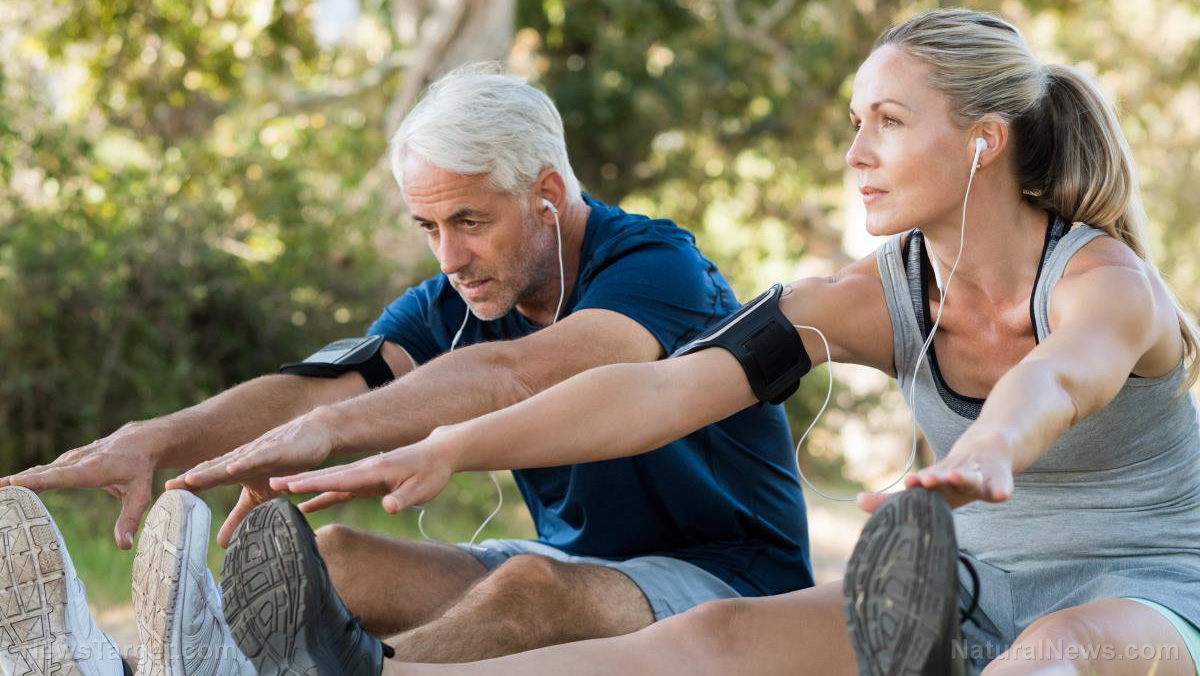
In addition to fighting off Parkinson's, exercise brings the usual physical benefits of reduced stiffness, improved posture, increased mobility, easier walking, and better balance. It also helps your mental state by reducing the effects of anxiety, depression, and stress.
And those are just the perks you receive almost immediately when you start exercising. The long-term health enhancements include greatly decreased chances of hard falls – which in turn reduces the risks of sustaining serious injuries from these – and greater independence from the need for physical assistance. (Related: Gut health plays a primary role in the onset of Parkinson’s disease.)
Take cardio exercise and resistance training together
The typical exercise routine has both cardio (also called aerobic) workouts and resistance training. The two types of exercises complement each other.
Aerobic exercises get your heart pumping and your blood rushing. They prevent bradykinesia – the unnatural slow movement associated with Parkinson's disease – and strengthen muscles. A good way to start is to spend at least 30 minutes on medium to intense cardio workouts every week. You can go jogging, swim in a pool or a nearby body of water, or just walk around the neighborhood.
Resistance training can decrease trembling and stiffness in movements, while also preventing bradykinesia. It is not limited to just weightlifting; it involves any physical activity where your muscles overcome "resistance." Twice a week, complete several sets of multiple push-ups, pull-ups, and modified squats. If you want weightlifting, use light weights that can be worn around the ankles and wrists.
Yoga, water exercises, and tai chi restore balance to the mind and body
Practicing yoga brings balance to both the body and the mind. Its benefits also extend to people who are suffering from Parkinson's disease.
Researchers at the Chinese University of Hong Kong recommend patients follow a 90-minute session of Hatha yoga every week. The regular exercise can make walking less of a chore, prevent potentially dangerous falls, greatly improve posture, and lift depression.
Water exercises are exactly what their name implies: Physical exercises performed in water, which increases their effectiveness and helps improve balance. Aqua aerobics and other water exercises can alleviate stiffness while also increasing the coordination between your brain and your body. Ordinary swimming is less effective but still beneficial.
Tai chi is another great way for Parkinson's disease patients to improve their balance. Built upon slow physical movements, this Chinese martial art can be practiced in the comforts of the home without the need for expensive equipment.
Try out stationary biking and physical therapy
Patients with Parkinson's disease react slower and have much more trouble keeping their balance. So instead of pedaling a potentially dangerous regular bike, use a stationary bike that is much more stable and therefore safer. Or one could also use a tricycle instead of a two-wheeled bike.
Either option lets the user pedal very quickly while remaining safe. And fast pedaling happens to increase motor symptoms in the brain.
The last option – but not least – is undergoing physical therapy. Most activities turn out better with the assistance of someone who is knowledgeable in the matter. A physical therapist fulfills that supportive role for a Parkinson's disease patient. Regular physical therapy will help you improve your movements and make common physical activities easier.
Whatever form of physical exercise you take up, you should stick to it as regularly as possible. Doing so maintains the benefits to your health over longer periods of time.
Sources include:
Please contact us for more information.























